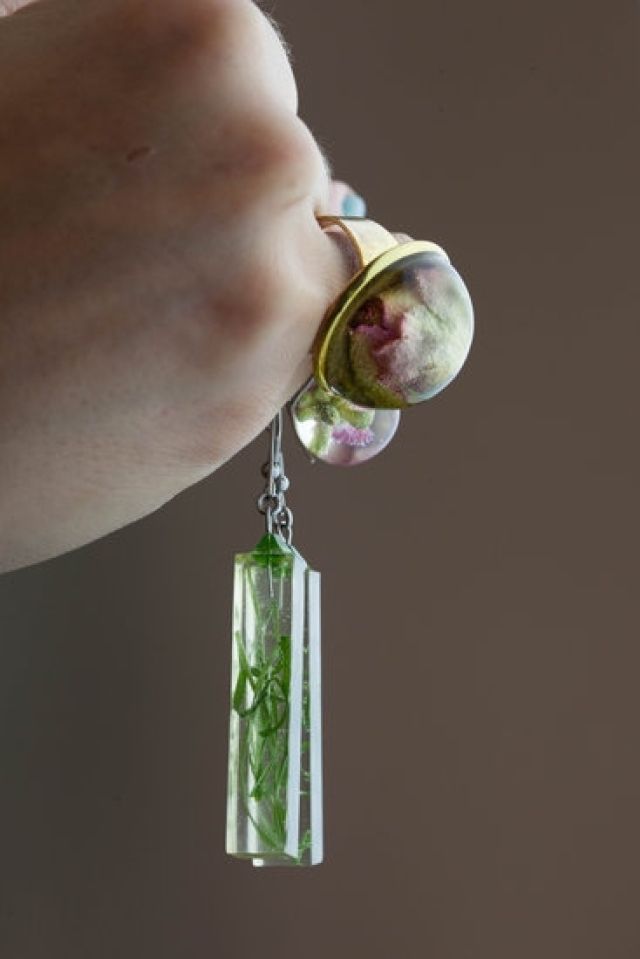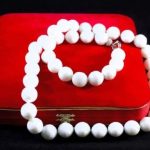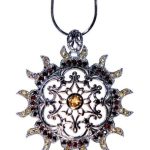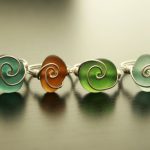Jewelry has been used as a symbol of status and wealth for thousands of years. Over the course of time, different materials have been used to craft jewelry, including stone, wood, metal, and even shells. While fashion trends come and go, certain materials have remained popular for centuries, providing an enduring source of style for men, women and children alike. The most commonly used material in jewelry making today is metal, which is typically available in gold and silver varieties.
The Popularity of Gold Jewelry
Gold is one of the most widely used metals when it comes to making jewelry. It has a bright sheen that looks stunning when paired with diamonds or other precious gems and stones. Gold also offers a level of durability that makes it one of the most popular choices among all types of jewelry makers.
Plus, it never goes out of style and remains an iconic element in any fine collection or wardrobe. Gold pieces can come in yellow tones and whites or rose colors depending on the type chosen for crafting each item.
Silver Jewelry Making
Silver has long been prized for its beauty and affordability by cultures dating back centuries before our own time. Silver jewelry often features intricate designs because silver is soft enough to be manipulated with precision during its creation process.
Silver has historically been associated with royalty due to its shine but is highly sought after today by people from all walks of life who want to make beautiful custom-made pieces at home too. Silver necklaces are always popular choices as they tend to offer classic looks that go appropriate with any occasion outfit regardless if you’re formally dressed up or just living it up at casual social events.
Conclusion
No matter what kind of design you have in mind for your jewelry piece, having the right material will ensure it stands out from the crowd and looks great over time. Metal – particularly gold and silver – remains favored among designers thanks to its long lasting durability coupled with an ability to gorgeous appeal year-round.
A Look at Different Types of Gold Jewelry
Gold jewelry is among the most popular types of jewelry around today. It is also one of the oldest materials used to create jewelry. Its popularity is based on its beauty, durability, and rarity.
Gold come in different karats and colors that range from 24k pure gold to 10k gold which contains other metals that change its color and hardness. Knowing the pros and cons of different types of gold jewelry can help you make an informed decision when it comes time to purchase the perfect piece for yourself or someone special.
One of the most popular types of gold used in modern jewelry is 14K gold. This type has a much nicer yellow sheen than 10K, and because it contains more pure gold it is a bit stronger so it is more durable for everyday wear.
The higher content of pure gold does increase the cost though, so if budget constraints are an issue 10K may be preferable since it still has a beautiful finish and slightly higher durability than lower karat tested alternatives such as 9K and 8K.
18k gold offers another popular option for those who prefer something higher quality than 14K, but want a lower cost alternative to 2019 rocks quality 19/20K pieces. 18K often comes with white or rose alloys that are added in addition to copper counts which boost strength at a lower cost compared to 19/20k options.
This combination can provide an especially unique look depending on the other materials chosen, but will require some additional maintenance as well due to its larger contents not being quite up to true heirloom quality levels (which tend to prefer actual stones such as diamonds).
In conclusion, there are many different types of gold jewelry available today for those looking for something special for themselves or someone else they love.
Choosing between them depends largely upon both personal preference and budget constraints – while 24k is generally seen as having the best qualities overall; any type from 10-18K offers beautiful looks with varying levels of durability making them suitable for many kinds of dressy occasions or everyday life circumstances depending on what’s needed out of their purchase decisions.
The Advantages of Silver Jewelry
Silver jewelry is a popular choice for many people due to its versatility and affordability. Silver is an affordable metal that comes in a variety of shapes, sizes, designs and colors. Additionally, silver is a material that is easy to clean and take care of.
It does not chip or rusteasily like gold which makes it more desirable for everyday wear. Silver jewelry can also be customized with engravings or etchings making it much more personal than other types of jewelry. Buying sterling silver jewelry doesn’t require purchasing large quantities at once either as it can come in smaller amounts such as rings, necklaces and earrings while still being able to style together with ease.
The Advantages of Gold Jewelry
Gold jewelry has long been a centerpiece in the fashion world given its luster and status associated with it. Gold is deemed valuable because it is rare and also malleable, meaning it can be molded into whatever shape you desire. In addition to its malleability, gold does not corrode or tarnish over timeand will always stay looking exactly how you bought it keeping your beautiful items intact year after year.
In terms of customization, golden accents are often paired with silver pieces adding class and elegance to any look or occasion with ease. Being that gold is considered a precious metal investing in gold usually holds some value albeit never quite as much as first purchase cost however, if one ever chooses to resell they can usually get something backfor their investment eventually.
The Advantages of Platinum Jewelry
Platinum jewelry has increased phenomenally in popularity within the last decade due to its perfect clarity white when compared to silver & gold platinum appears whiter and brighter paired especially well when contrasted against gemstones providing an extra sparkle. As far as durability goes platinum stands strong never losing shape over time standing the test of functionality bar-none.
The scratch resistance on platinum beats out all other metals making sure your bling stays crispy and looking fresh regardlessof outside elements such as weather\\ & friction.
Additionally since platinumis harder than other metals sizing can be tricky so make sure otherwise if you have any modifications done find someone that specializes specificallyin this type of work. Investing in platinum provides quality beyond comparison providing beauty eternal value well beyond monetary gains.
Crystal Jewelry vs. Cubic Zirconia Jewelry
Jewelry is a fashion accessory that has been around for centuries. People often wear jewelry to flaunt their style and announce their social status or personal preference. Despite this, not all jewelry is the same; in fact, a wide range of materials are used to create beautiful pieces. The two main types of materials used in jewelry production are crystal and cubic zirconia.
Crystals are natural mineral formations like quartz, amethyst, onyx, emeralds and more. Due to the rare nature of many crystals, they can be quite expensive. Crystal jewelry is usually colored with different dyes or irradiated treatments to bring out the colors in the stone even more brilliantly, enhancing it’s charm.
They have an opalescent luster which may result from its crystalline structure and light reflecting angles Diffracting light into many colors. Most people consider crystal jewelry to be one of the higher-end options as opposed to synthetic materials such as cubic zirconia.
Cubic zirconia is a lab-created alternative that looks and sparkles just like diamond but at a fraction of the cost. It’s also known for being far less brittle than natural stones such as diamonds and sapphires.
It shares similar properties with other synthetic gemstones such as moissanite and cultured pearls because they’re all artificially created stones with similar properties to their natural counterparts Much like crystal jewelry, cubic zirconia also comes in a large variety of shapes, sizes, cuts & colors making it very versatile & popular. While you may sacrifice some of the beauty compared to crystal jewelry – you will be saving money due to its low cost & high availability.
Exploring Different Varieties of Platinum Used in Jewelry
Jewelry is most commonly made from precious metals such as gold, silver and platinum. Platinum, in particular, has become a popular choice due to its strength, durability and purity. As with gold and silver, there are various forms of platinum jewelry available. Understanding the different varieties used can help you make an informed decision when selecting pieces for your collection.
The most common form of platinum used in jewelry making is called ‘950 Plat’. This type has a high purity levels because it consists of 95% pure platinum along with 5% alloys like ruthenium and iridium which makes it durable and hard wearing. In addition to providing a beautiful finish, ‘950 Plat’ tends to retain its colour better than other metal types. This process is referred to as ‘platinumisation’ or ‘electrolysis’ which helps the metal resist tarnishing quickly over time.
The other major form of platinum used for making jewelry is called ‘PT900’ (also known as Palladium). It differs from ‘950 Plat’, containing 90% pure platinum that is mixed with 10% additional alloy elements like cobalt and copper for enhanced strength.
PT900 also features a higher melting point than standard platinum meaning that pieces created using this type of metal have excellent thermo-stability during wear or production phases. Additionally, its white hue contributes to its use in creating stunning designs since they can take on a variety of tones ranging from grey to yellow depending on their usage conditions or finishing techniques applied before being put up for sale.
In summary; while traditional types of gold and silver remain popular choices when it comes to jewelry making, the two main options when it comes to incorporating platinum into designs are ‘950 Plat’ or ‘PT900’. Both contain high purity levels but differ slightly by featuring different alloys blended with them to create distinctive strengths and appealing hues.
By understanding what type of material should be used depending on your needs, you will be able to purchase quality pieces that stand out today.
A Guide to Differentiating Natural and Synthetic Gems
Most jewelry is made of metals, such as gold, silver, copper, brass, and stainless steel. In addition to metals, jewelry is also composed of many different gems and precious stones. These can range from diamonds to sapphires and from rubies to amethysts. Some jewelry also contains synthetic gems or artificially created stones. Knowing the difference between natural and synthetic gems can be important for those looking for a unique piece or trying to purchase an item at its true value.
Natural gems usually come from mines and are mined in large quantities before being cut into a usable shape for use in jewelry making. The most popular natural gems are diamonds, which are found in the ground or sourced from river deposits using mining technology. Natural sapphires come from various parts of the world including India, Australia, Thailand and Myanmar.
Natural rubies have traditionally been sourced from Burma as well as Thailand and Afghanistan. Amethysts are mineral deposits mainly found in Uruguay or Brazil while turquoise is sourced primarily from China or Iran.
In comparison, synthetic gems are man-made stones crafted in a lab environment using technology similar to that of a diamond cutting machine. They resemble natural gems in composition but the production process allows them to be manufactured with higher color accuracy than many naturally occurring ones due to improved quality control standards during the production process.
One common example of synthetic jewels is moissanite, which has high Hardness rating (Resistance to scratches) due to its manufacture with uniformity through technology instead of variations like with natural gems found in nature that accumulate over time without human intervention.
Synthetic stones like cubic zirconia can look very similar to diamonds but can also provide more varied colors at much lower prices than diamonds do if someone wants to enjoy their beauty without paying the cost associated with rarity of the real stone.
Understanding whether you’re using a natural gem or buying something developed with modern technology can help you decide if you’re getting truly get what you pay for when it comes purchasing precious items crafted with priceless materials like rare jewels or priceless metals like gold and platinum used extensively within fine jewelry production today.
Tips for Sourcing Quality Jewelry Materials
One of the most popular materials used to make jewelry is gold. Since ancient times, gold has been created into stunning pieces of jewelry. Due to its malleability and lustrous finish, it is a sought-after choice for crafting luxurious necklaces, earrings, pendants, and more.
Gold can be alloyed with metals such as copper and zinc in order to help strengthen the metal or add different colors and hues. Today, you’ll find various varieties of gold including white, yellow and rose gold.
Silver is another popular material for jewelry making. Its shimmering qualities make it beloved among makers and wearers alike. Silver must be mixed with other metals before it can be crafted as it may be too soft on its own.
Nickel is commonly added to silver to increase its strength or cobalt-which adds a blue tone to the finished piece. Silver also easily oxidizes over time so keep this in mind when wearing if you want your piece look pristine for longer periods of time
Finally, gemstones are an extremely popular within the jewelry market due the abundance of cuts available today. These days you’ll find emeralds, sapphires and diamonds just about any shape and size imaginable which allow jewelers create unique pieces their customers adore.
It’s important though that sourcing quality stones can be difficult so make sure buy from reputable dealers who provide certificates origin authenticity and/or identify novaculite as well information regarding how where each stone was mined Where possible , try get contact manufacturers directly source gems at wholesale sign up contact details mailing lists email newsletters. Connecting directly jewellery manufacturers other professionals involved industry making process will likely get better deals on material.
Conclusion
The material that is usually chosen for making jewelry tends to vary depending on the desired outcome. For example, metals such as gold and silver are a popular choice due to their long-lasting durability and range of colors they can come in.
Other options include natural materials such as pearls, as well as synthetic materials like cubic zirconia or various other man-made stones. Any type of metal, natural or synthetic stone can be used together to create unique and beautiful jewelry items.
Investing in quality materials is incredibly important when, it comes to making jewelry. When crafting the pieces, details matter and the right material will make all the difference when it comes to end result.
For example, higher quality stones tend to have better optical clarity than cheaper options, which will make your piece look even more beautiful when finished. Similarly, investing in high quality metal will give ensure your work is durable enough to last years without tarnishing or losing its finish.
It’s also important to consider comfort when creating a piece of jewelry for someone else – wearing something uncomfortable is not ideal by any means. If comfort is one of your priorities then opting for lightweight metals such as silver and titanium are preferable over heavier choices like gold or steel since they won’t weigh down the person wearing them.
Selecting softer yet still durable stones such as turquoise may also add an extra layer of comfort to your design – this type of stone can also have an interesting characterful pattern embedded into it that makes it look even more unique.
Overall investing in quality materials will definitely help you produce better work and will help you benefit from a longer lifespan if yours jewellery pieces need it in future years too. By taking necessary precautions during every stage of productionfrom choosing materials right through to finishing touches you can trust that your jewellerypieces will stand the test of time both aesthetically and functionally.

Welcome to my jewelry blog! My name is Sarah and I am the owner of this blog.
I love making jewelry and sharing my creations with others.
So whether you’re someone who loves wearing jewelry yourself or simply enjoys learning about it, be sure to check out my blog for insightful posts on everything related to this exciting topic!





